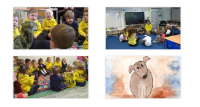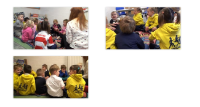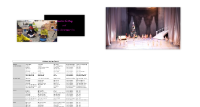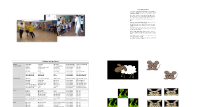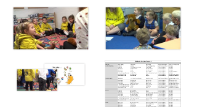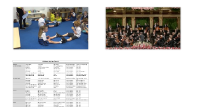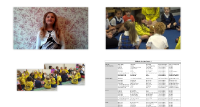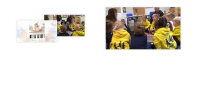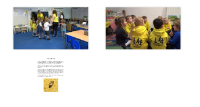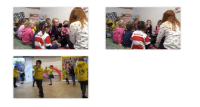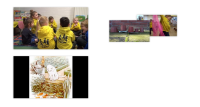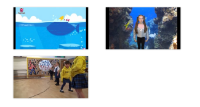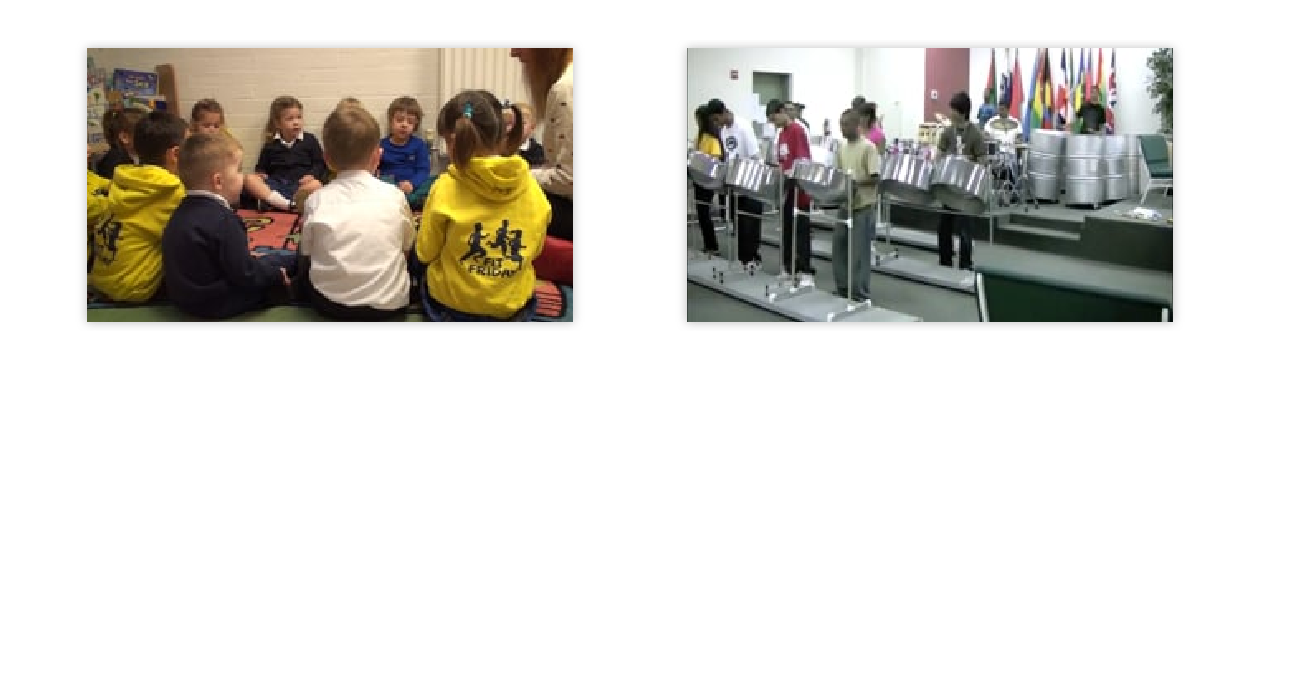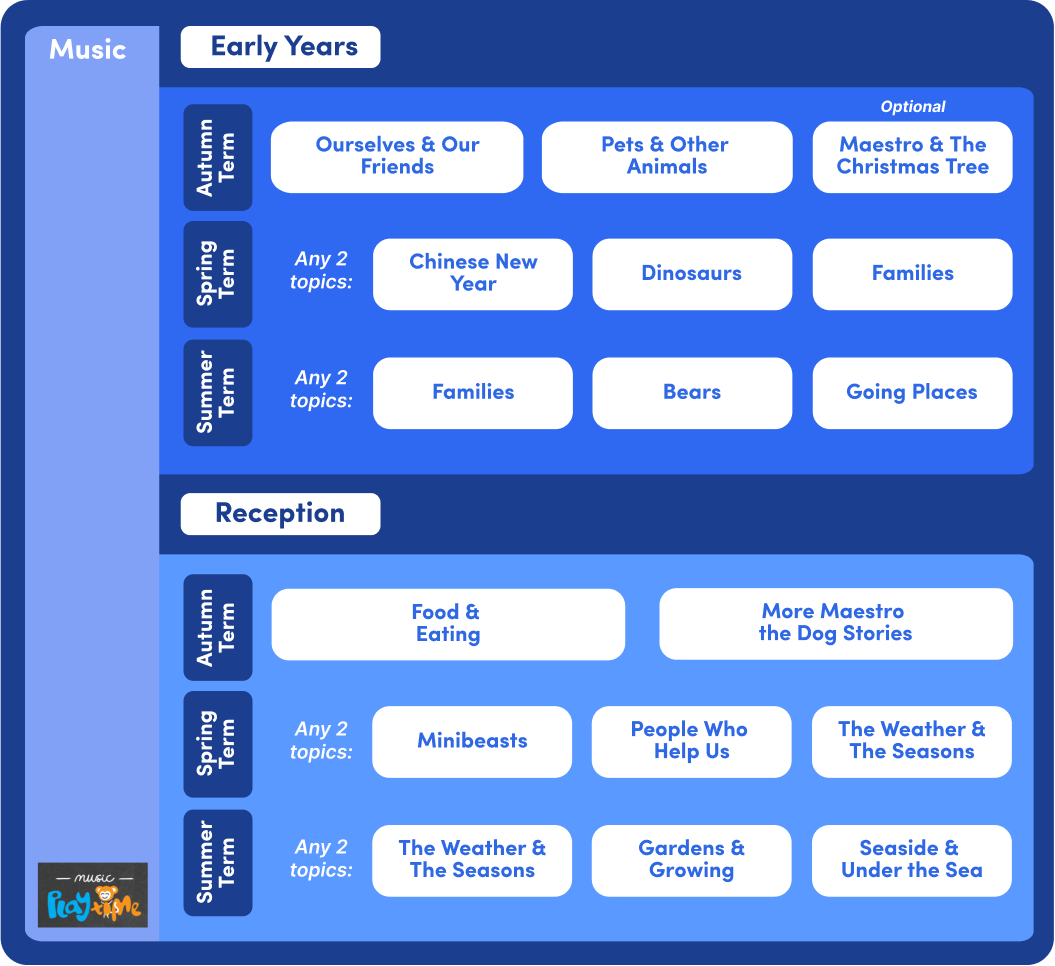People Who Help Us Level: Early Grades
Music Unit Description
Music activities that centre around people who help us.
Elements
- Silence: The quiet spaces between musical sounds.
- Pitch: High pitched and low pitched sounds.
- Dynamics: Louder or quieter sounds.
- Timbre: The individual quality of a sound.
- Texture: A single sound, or combined sounds.
Resources
- Optional - Out of the Ark: People Who Help Us songbook with audio CD
- Finger puppets e.g. at this link http://bit.ly/people_who_help
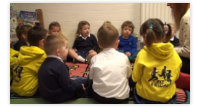
Lollipop Stop (silence)
If you make a big stop/go sign on a stick like that used by a Lollipop Patrol person you can play the Lollipop Stop game. When you hold the lollipop showing Go, the children sing and when you turn it round to Stop, they stop.
The children sing-song this little rhyme and you turn the lollipop to Stop on the word Stop! The children begin again when you turn the lollipop to Go. Wait for different lengths of time before turning to Go!
- I like to see the lollipop
- It tells the cars and vans to stop!
- (silence ....)
Lollipop Stop Variations
The same game can be played with walking on the spot instead of singing, or with everyone playing a hand-held, untuned percussion instrument.
If you have the Out of the Ark: People Who Help Us songbook with Audio CD, you might like to try the song Lollipop Lady. You'll need to spend some time teaching it if the children are to sing it in tune, so allow time to practise it yourself first! Here's a clip from the song:

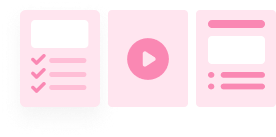
The Wheels on the Bus
The bus driver is someone who helps us by taking us safely to our destination! When the children learn this traditional song from the video, they can copy the actions too.
- The wheels on the bus go round and round
- Round and round, round and round
- The wheels on the bus go round and round
- All day long
- __
- The mums on the bus go chatter, chatter, chatter
- Chatter, chatter, chatter, chatter, chatter, chatter
- The mums on the bus go chatter, chatter, chatter
- All day long
- __
- The babies on the bus go wah, wha, wah
- Wah, wha, wah, wah, wha, wah
- The babies on the bus go wah, wha, wah
- All day long
- __
- The driver on the bus goes honk, honk, honk
- Honk, honk, honk, honk, honk, honk
- The driver on the bus goes honk, honk, honk
- All day long
Who Are The People Who Help Us?
This song fits in well with a bigger project on 'People Who Help Us'. The children could dress up as the different people who help us. If you have 'People who Help Us' puppets, some of the children could hold them up at the appropriate time (this is a good idea if you can't yet remember all the words!)
You'll hear the complete song first, followed by a couple of clips from the start of teaching it using the First Me, Then You method.
Some of the children didn't seem to know the word, 'vet' so the teaching process took a little longer than usual and I haven't included all of it.
- Who are the people who help us?
- Doctors, dentists, nurses and the vet
- Who are the people who help us?
- Let’s thank them all today
- __
- Who are the people who help us?
- Fire and rescue, teachers and police
- Who are the people who help us?
- Let’s thank them all today

Window cleaner (pitch)
Use a finger puppet or a cut-out picture of someone who might be a window cleaner. Make a picture of a ladder (or you may even be able to borrow a real one). Make the puppet go up and down the ladder. When it goes up, the children make an Ooooooh sound, going higher and higher. When the puppet goes down the ladder, the children make a downward Ooooooh sound.
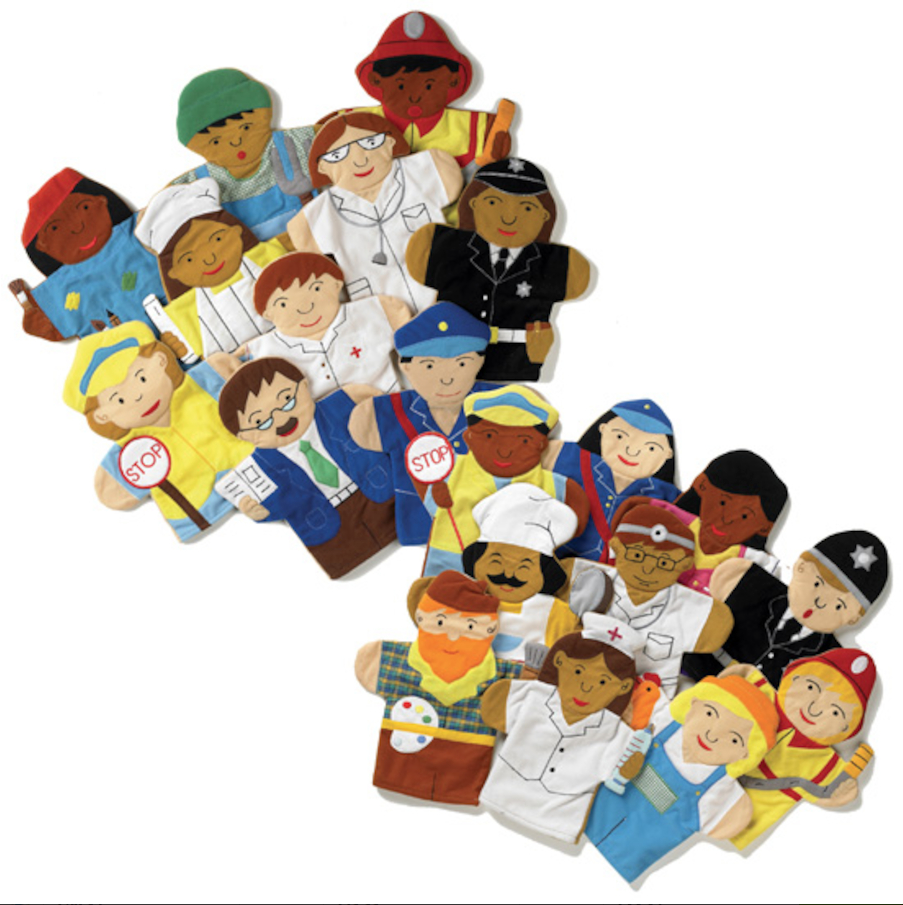
The Music Stave Ladder
In music, the musical stave looks a bit like a ladder and you could show the children an example and make the window cleaner go up and down the stave. It works in just the same way as a ladder - higher up the stave for higher notes and lower down the stave for lower notes. The children can make the same Ooooooh sound, or experiment with different vocal sounds that go up then down. This may be transferred to any instrument that makes pitched sounds, for instance a tuned percussion instrument but, at this stage, I would concentrate on the general principle and not introduce any specific note names.


Rubbish Music! (timbre, dynamics, texture)
A discussion will be needed first about what is rubbish, who takes our rubbish away and how we depend on other people to collect it and recycle some of it, making it into other things.
Then the fun can begin. Collect together clean items of rubbish that might be used for making sounds. There are many to choose from: plastic bottles, drinks cans, newspapers, old pans, plant pots. Perfects examples of 'rubbish' instruments are steel pans which really are made out of oil drums, with different-sized indentations hammered in on top to produce different-pitch notes.
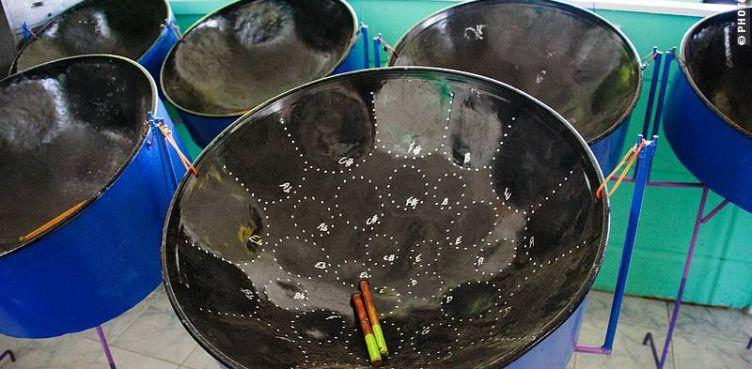
How to Play (also includes structure)
Playing the rubbish can take the form of experimentation in small groups first, categorising them in any ways you wish:
- Which objects can make the loudest/quietest sounds?
- Which can be played in more than way?
- Which can be played using a beater?
- Which can have dried peas added and be shaken?
- Can the children guess what is being played if the object is hidden from their view?
You could divide the whole group into smaller groups in which the members have a similar object to play. Then the more confident children could take turns at being the 'conductor', pointing at each group when they should make their sound. Try having two groups play at once for a thicker texture sound and draw attention to loud and quiet sounds.
This is one group's Rubbish Music. You'll hear the beginnings of dynamics, structure and timbre awareness in the order chosen by the 'conductor' - quieter sounds build up to louder sounds; rustly sounds come first (newspaper and plastic bag), scratchy sounds (old wicker basket scraped), boxes, bottles and cans are at the end. Sometimes one child makes a sound, sometimes more than one child, giving a variety of textures.
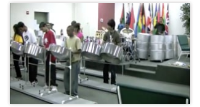
Steel Pan Music (rhythm, pitch, pulse)
Continuing with the theme of refuse collectors and people who work with recycling, here are some kids having great fun playing a piece called Viva La Vida on Steel Pans. I once taught steel pans at a Saturday morning music school so I have a bit of a soft spot for them and I love the energy of this group!
I think it would be great for the children to simply listen, watch and enjoy this video but they may like to get up and dance around when they hear it again.
Your own steel pans
Not everyone has a range of used oil cans! However you can ask parents for any old pans that they may wish to donate to create a Steel Pan Orchestra. All you need is ordinary beaters and a way of hanging up the pans by the handles - they make a much better sound if you hang them up. The pans will make different pitched sounds depending on their size. You can allocate one pan to each child, in a group and ask another child to be the 'conductor', who points to each child with a Start sign and a Stop sign. It's best for you to model this so that the 'conductor' understands what to do.

People Who Help Us resource book
Surprisingly there are few good books to choose from on People Who Help Us but this one has been recommended for helping with week by week planning in several areas of learning.


Lollipop Stop (silence)
If you make a big stop/go sign on a stick like that used by a Lollipop Patrol person you can play the Lollipop Stop game. When you hold the lollipop showing Go, the children sing and when you turn it round to Stop, they stop.
The children sing-song this little rhyme and you turn the lollipop to Stop on the word Stop! The children begin again when you turn the lollipop to Go. Wait for different lengths of time before turning to Go!
- I like to see the lollipop
- It tells the cars and vans to stop!
- (silence ....)
Lollipop Stop Variations
The same game can be played with walking on the spot instead of singing, or with everyone playing a hand-held, untuned percussion instrument.
If you have the Out of the Ark: People Who Help Us songbook with Audio CD, you might like to try the song Lollipop Lady. You'll need to spend some time teaching it if the children are to sing it in tune, so allow time to practise it yourself first! Here's a clip from the song:


The Wheels on the Bus
The bus driver is someone who helps us by taking us safely to our destination! When the children learn this traditional song from the video, they can copy the actions too.
- The wheels on the bus go round and round
- Round and round, round and round
- The wheels on the bus go round and round
- All day long
- __
- The mums on the bus go chatter, chatter, chatter
- Chatter, chatter, chatter, chatter, chatter, chatter
- The mums on the bus go chatter, chatter, chatter
- All day long
- __
- The babies on the bus go wah, wha, wah
- Wah, wha, wah, wah, wha, wah
- The babies on the bus go wah, wha, wah
- All day long
- __
- The driver on the bus goes honk, honk, honk
- Honk, honk, honk, honk, honk, honk
- The driver on the bus goes honk, honk, honk
- All day long
Who Are The People Who Help Us?
This song fits in well with a bigger project on 'People Who Help Us'. The children could dress up as the different people who help us. If you have 'People who Help Us' puppets, some of the children could hold them up at the appropriate time (this is a good idea if you can't yet remember all the words!)
You'll hear the complete song first, followed by a couple of clips from the start of teaching it using the First Me, Then You method.
Some of the children didn't seem to know the word, 'vet' so the teaching process took a little longer than usual and I haven't included all of it.
- Who are the people who help us?
- Doctors, dentists, nurses and the vet
- Who are the people who help us?
- Let’s thank them all today
- __
- Who are the people who help us?
- Fire and rescue, teachers and police
- Who are the people who help us?
- Let’s thank them all today

Window cleaner (pitch)
Use a finger puppet or a cut-out picture of someone who might be a window cleaner. Make a picture of a ladder (or you may even be able to borrow a real one). Make the puppet go up and down the ladder. When it goes up, the children make an Ooooooh sound, going higher and higher. When the puppet goes down the ladder, the children make a downward Ooooooh sound.

The Music Stave Ladder
In music, the musical stave looks a bit like a ladder and you could show the children an example and make the window cleaner go up and down the stave. It works in just the same way as a ladder - higher up the stave for higher notes and lower down the stave for lower notes. The children can make the same Ooooooh sound, or experiment with different vocal sounds that go up then down. This may be transferred to any instrument that makes pitched sounds, for instance a tuned percussion instrument but, at this stage, I would concentrate on the general principle and not introduce any specific note names.


Rubbish Music! (timbre, dynamics, texture)
A discussion will be needed first about what is rubbish, who takes our rubbish away and how we depend on other people to collect it and recycle some of it, making it into other things.
Then the fun can begin. Collect together clean items of rubbish that might be used for making sounds. There are many to choose from: plastic bottles, drinks cans, newspapers, old pans, plant pots. Perfects examples of 'rubbish' instruments are steel pans which really are made out of oil drums, with different-sized indentations hammered in on top to produce different-pitch notes.

How to Play (also includes structure)
Playing the rubbish can take the form of experimentation in small groups first, categorising them in any ways you wish:
- Which objects can make the loudest/quietest sounds?
- Which can be played in more than way?
- Which can be played using a beater?
- Which can have dried peas added and be shaken?
- Can the children guess what is being played if the object is hidden from their view?
You could divide the whole group into smaller groups in which the members have a similar object to play. Then the more confident children could take turns at being the 'conductor', pointing at each group when they should make their sound. Try having two groups play at once for a thicker texture sound and draw attention to loud and quiet sounds.
This is one group's Rubbish Music. You'll hear the beginnings of dynamics, structure and timbre awareness in the order chosen by the 'conductor' - quieter sounds build up to louder sounds; rustly sounds come first (newspaper and plastic bag), scratchy sounds (old wicker basket scraped), boxes, bottles and cans are at the end. Sometimes one child makes a sound, sometimes more than one child, giving a variety of textures.

Steel Pan Music (rhythm, pitch, pulse)
Continuing with the theme of refuse collectors and people who work with recycling, here are some kids having great fun playing a piece called Viva La Vida on Steel Pans. I once taught steel pans at a Saturday morning music school so I have a bit of a soft spot for them and I love the energy of this group!
I think it would be great for the children to simply listen, watch and enjoy this video but they may like to get up and dance around when they hear it again.
Your own steel pans
Not everyone has a range of used oil cans! However you can ask parents for any old pans that they may wish to donate to create a Steel Pan Orchestra. All you need is ordinary beaters and a way of hanging up the pans by the handles - they make a much better sound if you hang them up. The pans will make different pitched sounds depending on their size. You can allocate one pan to each child, in a group and ask another child to be the 'conductor', who points to each child with a Start sign and a Stop sign. It's best for you to model this so that the 'conductor' understands what to do.

People Who Help Us resource book
Surprisingly there are few good books to choose from on People Who Help Us but this one has been recommended for helping with week by week planning in several areas of learning.

